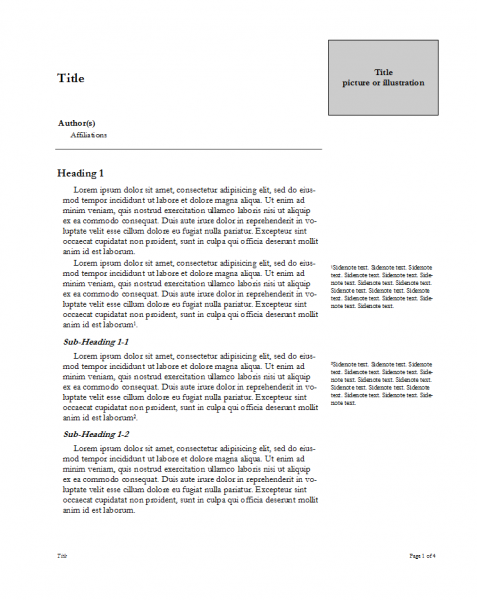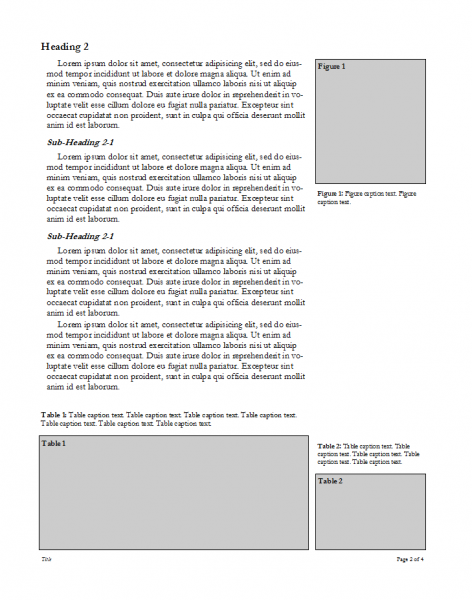If you've been to a seminar or read an article about "how to give a better presentation" or "how to make a better poster", you have probably heard of Edward Tufte. In fact, you may have even been at one of his seminars, or seen material from them second hand. In any case, a common point of advice is to create a handout when ever making a presentation or presenting a poster. Scientists and other researchers have to create so many posters and presentations that this handout making task, sadly, is usually left out. I hope some of you can get a little help and encouragement towards making your own handouts from this template. Handouts are beneficial for several reasons. One reason, as Tufte conveys constantly, is that handouts can be much more information-dense, and yet more easily browse-able at the same time. A large table of data is a nightmare on a presentation slide, yet easily navigable as a handout. Another reason is that handouts persist far longer than memories of your words, slides, or poster ever would. While they aren't permanent bookshelf material, they are excellent advertising for those who may be interested in your work. Handouts also provide for your audience better memory triggers in the future beyond what business cards will ever do. So, for the benefit of your audience as well as your own future opportunities, I recommend making this additional effort whenever an important event comes along.
If you want to do this the "right" way, you should really use a LaTeX document class like this, but many people are not already familiar with LaTeX and do not have the time to learn it prior to their next event. As another alternative, since I couldn't find one posted elsewhere, I have created and posted a MS Publisher template of an Edward Tufte-style handout as described in his books and website. You can also access it though the downloads page.
Microsoft Publisher doesn't make it easy to copy what Edward Tufte does exactly down to the fonts and other details, but most of your objectives can be met with a template like this one. The following list details what has been included in this template, and the pictures below display what the first two pages look like.
What this template won't do (unfortunately): MS Publisher is not LaTeX. It isn't even MS Word as far as automatic text handing for citations, references to figures and tables, and other similar things. That means you will have to make sure numbers match up, the footer matches the main title, and references are numbered properly. But, fortunately, this is a short 4-page handout and not a dissertation. You won't be using this to publish a 40-reference article or layout the results of an experiment in 16 charts and graphs. So, as an accompaniment, I've found it acceptable to suffer through the amount of manual labor required to use it.
For what it's worth, and with the knowledge that I myself am still exploring the usefulness of and best practices for creating this kind of media, you can see one of my recent examples using this handout template here.
[ad name="Adsense Small Horz Banner"]





